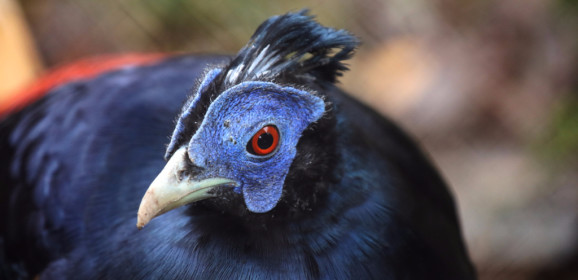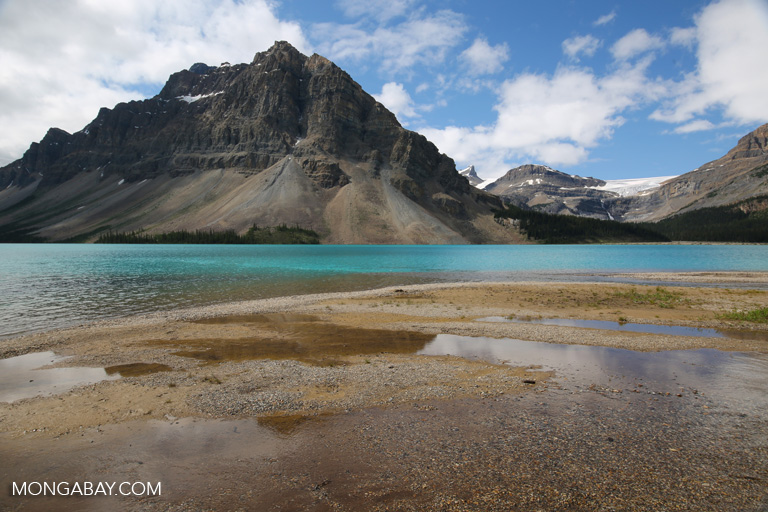Reporter’s Journal: Times are getting dark
By Mongabay Special Reporting Initiative Fellow Ruxandra Guidi. Photo by Roberto Guerra. This is the season of hurricanes and heavy storms. But the archipelago of Kuna Yala, located south of the hurricane belt, is typically spared the damage and strong winds that hit islands further north in the Caribbean, year after year. In recent years, however, rains have forced the people living in these islands — an estimated 30,000 — to start...
Reporter’s Journal: In Search of Sardines
Community members crowd aboard a slerek purse-seiner in Muncar, East Java, the morning after a successful sardine fishing expedition. University of British Columbia researchers calculated that nearly half the landings in Muncar are distributed to the crew, their relatives, and their neighbors, to eat at home or sell. Though an insurance for protein-rich diets among the local community, the practice means that commercial sardine sales...
Reporter’s Journal: Infant Shrimp
A technician checks on week-old shrimp larvae or nauplius, at the world’s largest shrimp and mollusk broodstock center in Bugbug, Indonesia. The center hopes to become a major supplier inexpensive and healthy “parent” shrimp to Indonesia’s domestic shrimp farming industry, to reduce reliance on pricier and occasionally disease-ridden imports from abroad. Indonesia is one of a handful of shrimp-producing countries unaffected by...
Reporter’s Journal: Fishermans’ Wives
Fishermens’ wives negotiate a price for freshly caught sardines in Negara, a town on the shores of the Bali Strait. The strait is about to become Indonesia’s first region to be managed under an ecosystem-based approach to fisheries management. This photo was taken by Mongabay.org’s Special Reporting Initiatives fellow Melati Kaye, who is reporting on the state of the fishing industry in...
Reporter’s Journal: from the fish warehouse
A worker packs Leopard Coral Grouper in a warehouse in Makassar, Indonesia. Indonesia is one of the world’s largest suppliers of live reef fish, mostly to East Asian markets. Though selling live reef fish is legal in Indonesia, many of the fish are caught illegally using cyanide. This photo was taken by Mongabay.org’s Special Reporting Initiatives fellow Melati Kaye, who is reporting on the state of the fishing industry in...
Reporter’s Journal: Disappearing Home
By Melati Kaye A boy takes in the sunset on Barang Lompo, one of the Spermonde Islands in Indonesia. The loss of local reef cover from destructive fishing practices and soil runoff from the nearby city of Makassar exposes islands like Barang Lampo to extreme weather. Over the last thirty years, this tiny island, like others in the region, has lost a tenth of its landmass from the erosive force of storm surges and increasingly larger...
Reporter’s Journal: Telling Fiji Time
The expression “Fiji Time” is commonly used among locals and expatriates. From my island experiences, it feels as though I could insert the name of any small island before the word, “time.” But Fiji time seems to also refer to time spent on the obligatory rituals that allows one to enter a village, be accepted, and talk more intimately with the people who belong to it. Aside from navigating the proper customary channels for permission...
Reporter’s Journal: From Panama
By SRI Fellow Ruxandra Guidi Don Jesus was tasked with the logistics for the conference, and Don Feliciano would be taking care of all the meals for more than 25 people. This was no small feat for these two septuagenarian men, who had to do a lot of phone calling and running around in order to try to secure things like ice and a motorboat and a generator. In the end, ice was the only thing they couldn’t get — and that’s because...
India plans new railway through protected areas, threatens already-imperiled wildlife
—Special report by Sanjay Gubbi and Shreya Dasgupta— On a winter day in November 2013, a passenger train in the eastern state of West Bengal in India collided with a herd of 40 to 50 elephants, killing five adults and two calves. This was not an isolated event. Such grisly incidences have killed tigers, leopards and several other wildlife species in the past. In fact, train-kills like these have become a routine...
Reporter’s Journal: Fighting poachers and Mother Nature
Fijians communities are largely in charge of managing their waterfront. Volunteer fish wardens in the village, appointed by the chief or the Minister, are the only official members of a village who can legally stop poachers. Though they rarely have any equipment to enforce protection of their tabus (swaths of temporarily protected marine areas inside their fishing grounds), they are harder pressed to fight the effects of climate...
Reporter’s Journal: The Lesser Fish
In Fiji’s capital city of Suva, middlemen buy directly from the fishers. The majority of the fish arrive early Saturday morning, indicating many of the reef fish are caught at night while many fish are asleep, making them easy targets for spearfishers. In the past, larger quantities of fresh fish was available daily. Now the sellers make fewer catches stretch across the week. The overwhelming concern about the region’s...
Reporter’s Journal: Dock Boys
By Melati Kaye “Dock boys” take a swim break from sorting and carrying fish at Makassar’s Paotere harbor, where fish caught with hook and line, homemade bombs, and cyanide are brought to port and sold. This photo was taken by SRI fellow Melati Kaye, who is reporting on the State of Indonesian Fisheries.
Reporter’s Journal: The forests of Uganda
In late January through early February I traveled to Uganda as part of the first Mongabay Special Reporting Initiative (SRI) to report on “the next big thing in tropical forest biodiversity conservation.” I’m a world traveler, and I have a special passion for tropical rainforests — having seen them in Australia, the Peruvian Amazon, Asia, and Central America. Africa was my last continent to visit (OK, does...
Camera-trap Ecotourism: the next big thing in conservation?
By Gregory McCann, Habitat ID Ecotourism is a popular growing trend, and this is especially true in tropical countries that have a wealth of biodiversity to offer the interested trekker. Cambodia is no exception. I have been visiting Virachey National Park in northeastern Cambodia for the past five years, but my most recent trip involved a special purpose: setting up 14 motion-triggered camera-traps throughout the park. Without giving...
Nelson Mandela, elephants and youth
Commentary by Isabel S. Abrams Most people think of Nelson Mandela as a fighter for racial equality in South Africa. To me, he is also a powerful advocate for protecting wilderness and empowering youth. In 2002, I was in the audience at the World Conference on Sustainable Development in Johannesburg, South Africa where I heard Mandela address delegates from more than 100 nations. “Many don’t want (conservation areas) set aside for...
A jungle day-trip: studying brazil nuts in the Peruvian Amazon
By Eleanor Warren-Thomas The day begins at around 5 a.m., when the sounds of motorbikes revving, dogs barking, wood being chopped and shouting men start to permeate the room. I haven’t needed to set my alarm for weeks. I am here to help run a project on Brazil nut harvesting from lowland rainforests in Madre de Dios, in the Peruvian Amazon. Brazil nut collection from these forests forms a huge part of many people’s livelihood in this...
Indonesians working together to save Sumatran tigers
Reader contribution by Matthew S. Luskin Indonesians are committed to ensuring the persistence of Sumatran tigers. The gamut of island-wide conservation efforts was discussed this week in Padang, West Sumatra, during the annual meeting of HarimauKita (harimau means “tiger” in Indonesian), which brought together a consortium of stakeholders for Sumatran tiger conservation. Members worked late into each night to coordinate and evaluate...
Sunset on the Nile
By Jemma Smith This stunning photograph is of the sun setting over the River Nile, which is said to be the longest river in the world with a staggering 6,670 km (4,160 miles) in length and discharges an average of 3.1 million litres of water per second into the Mediterranean Sea. It is long been disputed where the exact source of the river is, however, many believed it to be Lake Victoria in Tanzania. The River Nile travels through...
Sneaky Snakes in Indonesia
A shocking 449 species of reptiles call Sundaland home, of which 249 are endemic to the region. Indonesia has an extremely high level of biodiversity, which is most likely due to the great size and tropical archipelago make-up of the land. The Indonesian fauna is so vivid, that the colors of these snakes actually camouflage them into the background. Each of these snake’s coloring has evolved to blend in with where it tends to...
The cloud forests and hummingbirds of Ecuador
By Claire Salisbury The bus journey to Mindo winds up and out of the high, dry valley in which Quito sits between volcanic peaks, and then down into the wet, lush cloud forest on the western slopes of the Andes. This is one of the most biodiverse places on earth, within the Tumbes-Chocó-Magdalena hotspot, and recognized as an Important Bird Area by BirdLife International. Mindo is a quiet little place, surrounded by forested hills...






















